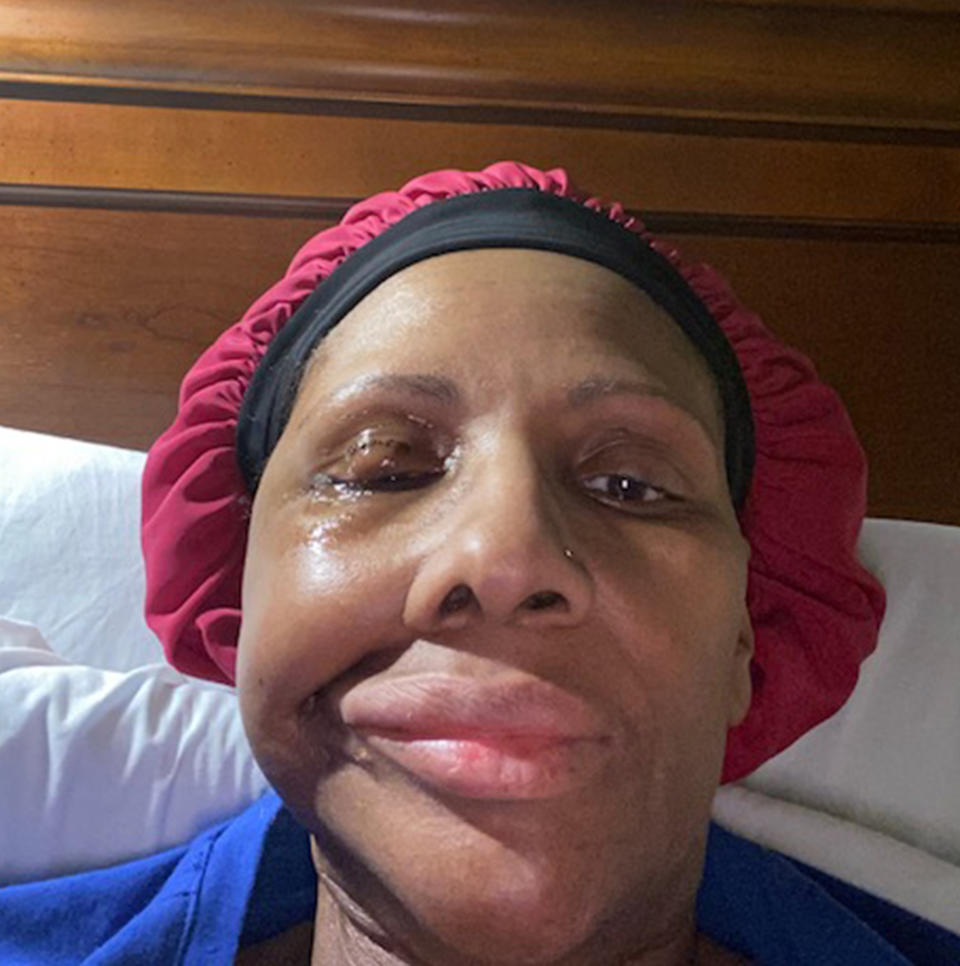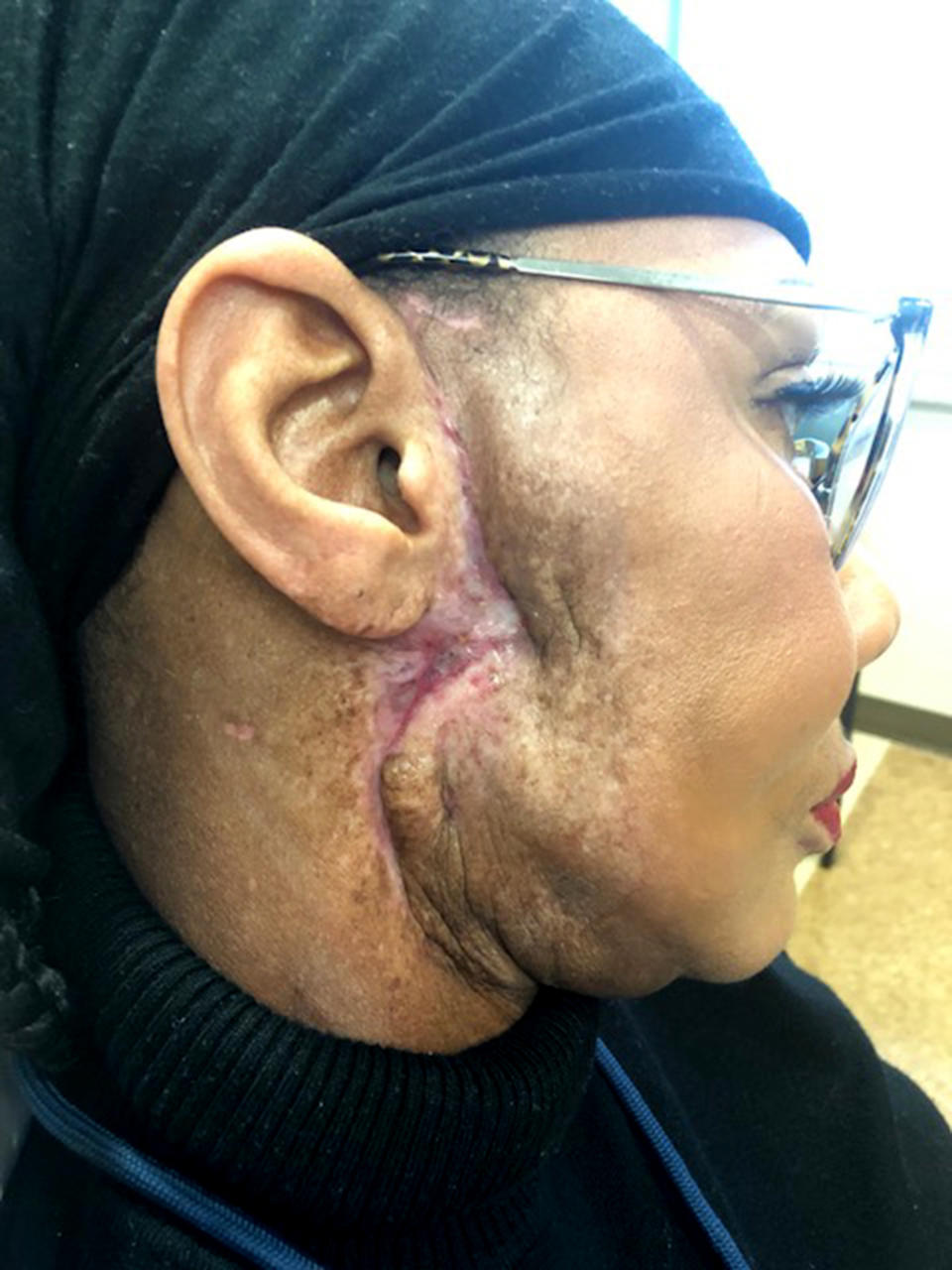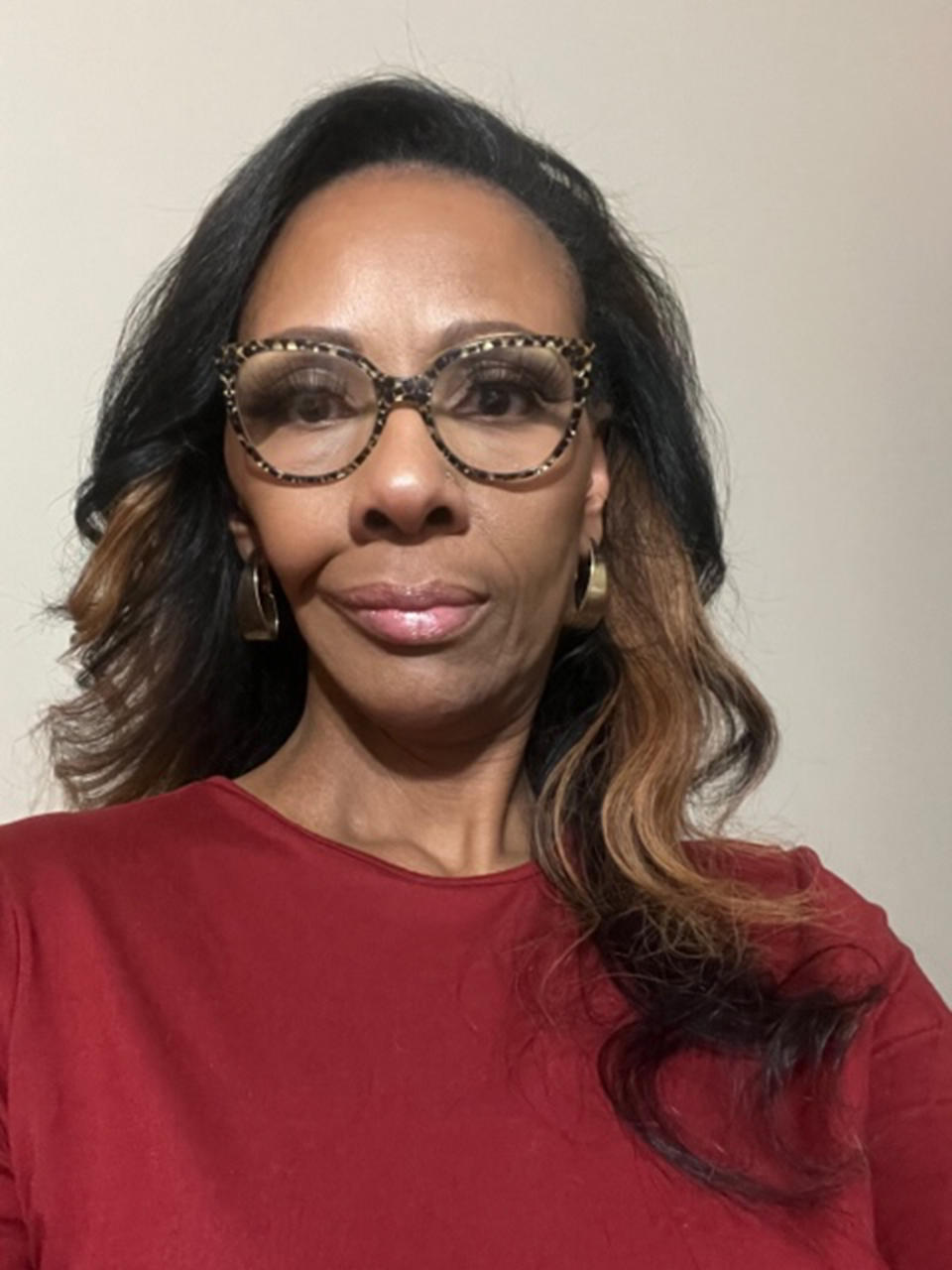Woman's eye twitching, mystery symptoms lead to frightening diagnosis

Nicci Buford was enjoying good health, traveling and starting a new job, when she began experiencing strange symptoms whenever she ate.
In late 2017, she first noticed “horrible pain” when she put food in her mouth.
“If you eat something sour and it gives you that tingling feeling in the back of your jaw — it was like that, but then the pain would shoot across my face like a spider web,” Buford, 52, tells TODAY.com.
As an administrator for the Kansas City VA Medical Center, she works in healthcare and tried to figure out the cause. Perhaps it was trigeminal neuralgia, a chronic pain disorder that involves sudden and severe facial pain, she thought.
Buford saw a neurologist, but that didn’t help. Next, she visited a dentist who said her back teeth were shifting and recommended extracting a back molar. That seemed to work and the mystery pain went away for a while. But it came back with a vengeance about a month later.
In early 2018, Buford was in the kitchen with her husband when he asked her to taste something he was cooking.
“I went to go taste it and he said he just saw my eyes roll back because the pain was so excruciating, I blacked out,” Buford says, describing the ache traveling from the right side of her head all the way across to the left.
“I’ve had three children and my largest was 10 pounds, 14 ounces. I can tell you it was the worst thing I’ve ever felt in my entire life.”
She remembers her husband saying, "Something is really wrong."
Constant eye twitching
Buford underwent a CT scan, followed by fine needle biopsies and an MRI, but the diagnosis was still unclear. Then, as she was visiting an ear, nose and throat surgeon, he noticed her right eye was twitching.
Buford says that eye had started twitching non-stop to the point she had blurred vision. It was accompanied by a headache that went from the back of her skull to the front. It was so painful that it was keeping her up at night.
“(The doctor) noticed it because he saw my face kind of wrenching in pain. He said he would need to do surgery now because the pain is not normal. It could be a sign of cancer,” she recalls.
In April 2018, Buford was diagnosed with stage 4 adenoid cystic carcinoma, a rare form of cancer that usually develops in the salivary glands of the head and neck, according to the Genetic and Rare Diseases Information Center.
Her eye was twitching because the cancer in her salivary gland had traveled up to the nerve controlling her eyelid.

April is Head and Neck Cancer Awareness Month. It’s a collective name for a disease that can start in the sinuses, nose, mouth, throat, voice box and the glands that make saliva, according to the Centers for Disease Control and Prevention.
Head and neck cancers account for almost 4% of all cancers in the U.S., the National Cancer Institute notes. Treatment can change the way a patient looks, talks, eats, chews, swallows or breathes, it adds.
Only about 1,200 people are diagnosed each year with adenoid cystic carcinoma, the type of cancer Buford had, according to the Cleveland Clinic. Doctors don’t know what causes it or what the risk factors are, it adds.
'I felt disfigured'
Buford had surgery to remove the cancer in May 2018 — one of many procedures she’s had to endure since.
Doctors put a gold weight her right eyelid so that it would close because she no longer had that functionality. She also underwent radiation.

The surgery changed Buford’s face and speech.
“It got to the point where I didn’t want to leave the house because I felt so disfigured,” she says. “That first year-and-a-half, I really felt like giving up… (but) I’m a fighter and I’m going to continue to push on.”
She later underwent a gracilis flap transfer — where a surgeon took a muscle out of her leg and placed it in her face — to recreate smile muscles and improve her speech.
Buford has more procedures coming up this summer and says most people don’t understand the ramifications of what happens after the cancer.
She has occupational therapy every other day, takes 14 medications and has to eat differently. The food has to be soft and cut up into very small pieces. A meal that might have taken 30 minutes to eat before now may take her an hour-and-a-half to chew.

This type of cancer can metastasize to the lungs, so she regularly undergoes scans. She still has a lot of pain.
But Buford is grateful to help spread awareness about the disease with the Head and Neck Cancer Alliance, and is thankful for the support of her family, especially her husband.
“I’m so glad that the beautiful relationship we have is not just skin deep, because he’s seen me at truly my worst, where literally my face was falling off. And he’s right there,” she says.
Symptoms of head and neck cancer:
The warning signs depend on where the cancer starts. Here are some of the possible symptoms, according to the CDC:
Mouth: a white or red sore that doesn’t heal on the gums, tongue or lining of the mouth; jaw swelling, unusual bleeding.
Back of the mouth: Trouble breathing or speaking, or chewing or swallowing food; persistent throat pain.
Sinuses and nasal cavity: Blocked sinuses that don’t clear, nose bleeding, headaches, pain and swelling around the eyes, pain in the upper teeth.
This article was originally published on TODAY.com

